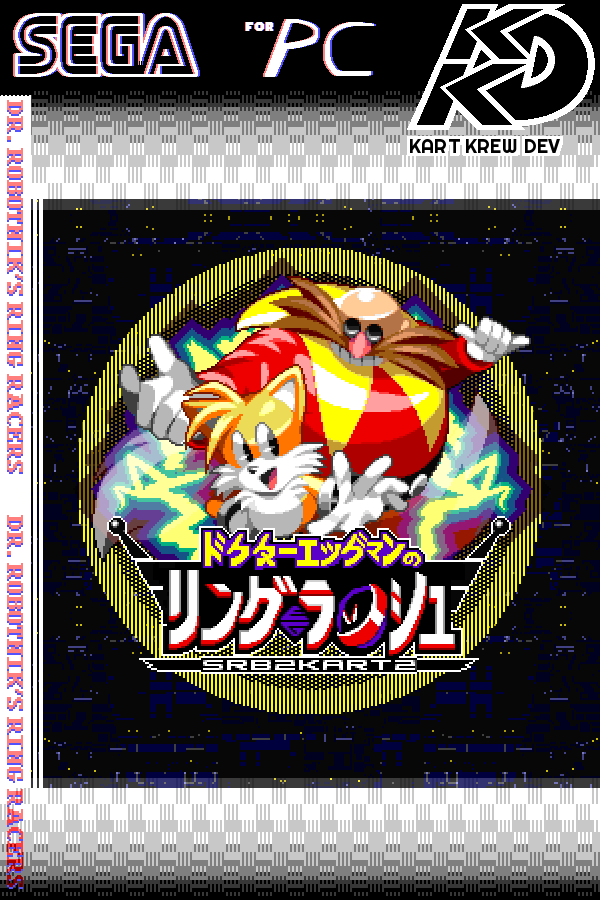Understanding "Dr Robotnik's Ring Racers Doesn't Save" in Material Trends
Share
In today's fast-paced, ever-evolving digital landscape, staying ahead of material trends is not just an option—it's a necessity. With the introduction of "Dr Robotnik's Ring Racers Doesn't Save," we are witnessing a groundbreaking application that melds gaming culture with material innovation. This article delves into how this concept is shaping the industry and why it holds significant importance.

Image Source: GNWCDN
Historical Context: The Evolution of Material Trends
To appreciate "Dr Robotnik's Ring Racers Doesn't Save," it's crucial to understand the historical context of material trends. The past few decades have seen substantial advancements in material science, particularly in sectors like gaming, fashion, and technology. Initially, materials were chosen based on availability and cost; however, today, sustainability, adaptability, and performance are vital factors.
As early as the 1990s, material innovation began to take a more prominent role, especially with the advent of digital fabrication techniques like 3D printing. These technologies have allowed creators to experiment with new forms and functionalities, driving the evolution of materials from mere components to integral parts of design and storytelling.
The Impact of Gaming Culture on Material Trends
The Fusion of Virtual and Physical Worlds
Gaming culture has always been a fertile ground for innovation, especially in material trends. "Dr Robotnik's Ring Racers Doesn't Save" epitomizes this fusion. The game employs cutting-edge materials to create an immersive experience, combining physical elements like controllers and consoles with digital interfaces. This synergy enhances user engagement and elevates the gaming experience to unprecedented levels.
Aesthetic and Functional Innovation
One of the most remarkable aspects of material trends in gaming is the blend of aesthetic and functional innovation. For instance, the materials used in "Dr Robotnik's Ring Racers Doesn't Save" are not just visually appealing but also offer superior durability and functionality. This duality is crucial for maintaining user interest and ensuring long-term sustainability.
A practical example of this trend is the use of composite materials in gaming hardware. These materials offer enhanced durability and performance, ensuring that users can enjoy a seamless gaming experience without frequent repairs or replacements. This is particularly relevant for components like controllers, which undergo significant wear and tear.
Case Study: Dr Robotnik's Ring Racers
Let's examine a specific instance to understand the practical application of these material trends. Dr Robotnik, also known as Dr. Ivo Robotnik, is a well-known antagonist from Sega's Sonic the Hedgehog series. His character has undergone significant transformations over the years, much like the materials used in the gaming industry.
The Evolution of Dr. Robotnik
Dr. Robotnik's character design and personality have evolved in tandem with advancements in material science. In the early days, his character was portrayed using simple, 2D graphics. However, as technology progressed, so did the complexity of his design. Modern interpretations of Dr. Robotnik feature intricate details and sophisticated animations, made possible by advanced materials and fabrication techniques.
For more details on Dr. Robotnik, you can check out this Sonic Retro page.

Image Source: Steam Grid DB
Material Innovation in Action
The materials used in creating Dr Robotnik's character and his various gadgets are a testament to the power of material innovation. For instance, the use of flexible polymers allows for more realistic and dynamic animations. These materials are not only lightweight but also incredibly durable, making them ideal for applications that require both flexibility and strength.
Practical Application: Controllers and Consoles
The controllers and consoles used in "Dr Robotnik's Ring Racers Doesn't Save" are designed with ergonomic materials that offer both comfort and durability. These materials are carefully selected to ensure a seamless user experience, minimizing the risk of strain or injury during prolonged gaming sessions.
For more details on the evolution of Dr. Robotnik's character, visit Wizard Dojo.
The Role of Sustainability in Material Trends
Sustainability is a critical factor driving material trends in the gaming industry. With increasing awareness about environmental issues, there is a growing demand for eco-friendly materials. "Dr Robotnik's Ring Racers Doesn't Save" addresses this by incorporating sustainable materials in its design.
Recyclable and Biodegradable Materials
The game features components made from recyclable and biodegradable materials, reducing its environmental footprint. These materials are designed to be easily recyclable, minimizing waste and promoting a circular economy.
Energy Efficiency
Energy efficiency is another crucial aspect of sustainability. The materials used in the game are not only eco-friendly but also energy-efficient, ensuring that the game consumes minimal power. This is particularly important in today's world, where energy conservation is a top priority.
Future Trends and Considerations
As we look to the future, several trends and considerations will shape the material landscape in gaming.
Advanced Composite Materials
One of the most exciting trends is the use of advanced composite materials. These materials combine the best properties of different substances, offering superior performance and durability. They are likely to play a crucial role in the next generation of gaming hardware, enhancing both functionality and aesthetics.
Smart Materials
Smart materials, which can change their properties in response to external stimuli, are another promising trend. These materials can adapt to different gaming scenarios, offering a more immersive and interactive experience. For instance, a controller made from smart materials could change its texture or shape based on the game's environment, providing a more tactile and engaging experience.
Customization and Personalization
Customization and personalization are becoming increasingly important in the gaming industry. Advanced fabrication techniques like 3D printing allow for the creation of customized gaming components, tailored to individual preferences. This trend is likely to continue, with more games incorporating customizable elements to enhance user engagement.
Recommendations for the Gaming Industry
Given these trends, the gaming industry must continue to innovate and adapt. Here are some recommendations for industry players:
- Embrace Sustainability: Incorporate sustainable materials in game design to reduce environmental impact.
- Invest in Advanced Materials: Explore the potential of advanced composite and smart materials to enhance gaming experiences.
- Focus on Customization: Offer customizable options to cater to individual preferences and enhance user engagement.
- Prioritize Energy Efficiency: Design energy-efficient components to minimize power consumption and promote sustainability.
By following these recommendations, the gaming industry can continue to thrive and innovate, offering exciting and sustainable experiences for gamers worldwide.
Final Thoughts
As the gaming industry continues to evolve, material trends will play a crucial role in shaping its future. "Dr Robotnik's Ring Racers Doesn't Save" is a prime example of how innovative materials can enhance both aesthetics and functionality, offering a more immersive and sustainable gaming experience.
For those interested in exploring this further, check out the collection of rings inspired by Dr Robotnik's character at Wear Fortune.
Incorporating advanced materials and sustainability principles is not just a trend; it's a necessity for the future of gaming. By staying ahead of these trends, the gaming industry can continue to offer exciting, engaging, and eco-friendly experiences for gamers worldwide. Whether you're a gamer, a developer, or just someone interested in material trends, the lessons from "Dr Robotnik's Ring Racers Doesn't Save" provide valuable insights into the future of gaming and design.




